-
 Bitcoin
Bitcoin $117900
0.31% -
 Ethereum
Ethereum $3766
0.28% -
 XRP
XRP $3.176
-0.31% -
 Tether USDt
Tether USDt $1.000
0.00% -
 BNB
BNB $795.6
1.51% -
 Solana
Solana $186.8
-1.09% -
 USDC
USDC $0.9999
-0.01% -
 Dogecoin
Dogecoin $0.2353
-1.33% -
 TRON
TRON $0.3226
1.49% -
 Cardano
Cardano $0.8172
-1.08% -
 Sui
Sui $4.178
3.06% -
 Hyperliquid
Hyperliquid $43.05
-3.39% -
 Stellar
Stellar $0.4367
-0.57% -
 Chainlink
Chainlink $18.62
1.47% -
 Hedera
Hedera $0.2828
6.63% -
 Bitcoin Cash
Bitcoin Cash $584.7
5.65% -
 Avalanche
Avalanche $24.81
2.53% -
 Litecoin
Litecoin $112.8
-0.88% -
 UNUS SED LEO
UNUS SED LEO $8.975
-0.08% -
 Shiba Inu
Shiba Inu $0.00001395
-1.07% -
 Toncoin
Toncoin $3.285
-1.05% -
 Ethena USDe
Ethena USDe $1.001
0.01% -
 Polkadot
Polkadot $4.123
0.76% -
 Uniswap
Uniswap $10.49
-0.18% -
 Monero
Monero $326.5
0.14% -
 Dai
Dai $0.9999
-0.02% -
 Bitget Token
Bitget Token $4.576
0.34% -
 Pepe
Pepe $0.00001247
-1.55% -
 Cronos
Cronos $0.1400
3.77% -
 Aave
Aave $295.1
-0.73%
How to catch the top divergence of KD indicator? How to short after the death cross is confirmed?
The KD Indicator helps traders spot trend reversals by identifying overbought and oversold conditions, while the death cross confirms bearish trends for short trades.
Jun 09, 2025 at 08:42 pm

Understanding the KD Indicator
The KD (or Stochastic) Indicator is a popular tool used by traders in the cryptocurrency market to identify potential trend reversals. It consists of two lines, %K and %D, which oscillate between 0 and 100. The KD indicator is primarily used to determine overbought and oversold conditions in the market. An overbought condition occurs when the KD lines move above 80, suggesting that the asset may be due for a price correction. Conversely, an oversold condition is indicated when the KD lines fall below 20, hinting at a potential upward price movement.
To effectively use the KD indicator, traders look for divergences between the indicator and the price action. A top divergence occurs when the price of an asset reaches a new high, but the KD indicator fails to reach a corresponding new high. This situation can signal that the upward momentum is weakening and a price reversal might be imminent.
Identifying Top Divergence with the KD Indicator
To catch the top divergence of the KD indicator, follow these detailed steps:
Select a Timeframe: Choose a suitable timeframe for your trading strategy. Shorter timeframes like 15-minute or 1-hour charts are often used for day trading, while longer timeframes like daily or weekly charts are preferred for swing trading.
Monitor Price and KD Indicator: Keep an eye on both the price chart and the KD indicator. Look for instances where the price makes a higher high while the KD indicator fails to make a corresponding higher high.
Confirm the Divergence: Ensure that the divergence is significant. A minor difference may not be a reliable signal. The more pronounced the divergence, the more likely it is to result in a meaningful price reversal.
Watch for Overbought Signals: The KD indicator should be in the overbought zone (above 80) when the divergence occurs. This adds further confirmation that the asset may be due for a price drop.
Use Additional Indicators: To increase the reliability of your signals, consider using other technical indicators such as the Relative Strength Index (RSI) or Moving Average Convergence Divergence (MACD) to confirm the divergence and potential reversal.
Preparing to Short After Identifying Top Divergence
Once you have identified a top divergence on the KD indicator, the next step is to prepare to short the asset. Here are the steps to follow:
Set a Short Entry Point: Decide on a specific price level at which you will enter your short position. This could be at the current price, at a slight pullback, or after a confirmed death cross.
Determine Stop-Loss Levels: To manage risk, set a stop-loss order above the recent high. This ensures that if the price continues to rise, your potential losses are limited.
Calculate Position Size: Based on your risk tolerance and the stop-loss level, calculate the appropriate position size. This helps in managing your overall exposure and maintaining a healthy risk-reward ratio.
Monitor Market Conditions: Keep an eye on market sentiment, news, and other technical indicators. These factors can influence the success of your short trade.
Understanding the Death Cross
The death cross is another important signal that traders use to confirm bearish trends. It occurs when a short-term moving average, typically the 50-day moving average, crosses below a long-term moving average, usually the 200-day moving average. This crossover is seen as a strong bearish signal and is often used to confirm a trend reversal.
Confirming the Death Cross and Executing a Short Trade
To short an asset after confirming a death cross, follow these steps:
Identify the Death Cross: Monitor your charts for the 50-day moving average crossing below the 200-day moving average. This can be done on any timeframe, but daily or weekly charts are commonly used for this purpose.
Confirm the Signal: Look for additional bearish signals to confirm the death cross. This could include bearish candlestick patterns, a bearish divergence on other indicators, or negative market sentiment.
Execute the Short Trade: Once the death cross is confirmed, enter your short position at the current market price or wait for a slight pullback to improve your entry point.
Set Stop-Loss and Take-Profit Levels: Place a stop-loss order above the recent high to manage risk. Additionally, set a take-profit level based on your analysis of potential support levels or other technical indicators.
Monitor the Trade: Keep a close eye on your trade and be prepared to adjust your stop-loss and take-profit levels as the market moves. This helps in maximizing profits and minimizing losses.
Combining KD Indicator and Death Cross for Enhanced Trading
To enhance your trading strategy, consider combining the signals from the KD indicator and the death cross. Here’s how you can do it:
Use KD Indicator for Early Signals: The KD indicator can provide early signals of potential trend reversals through top divergences. This allows you to prepare for a short trade before the death cross occurs.
Confirm with Death Cross: Once you have identified a top divergence on the KD indicator, wait for the death cross to confirm the bearish trend. This adds an extra layer of confirmation and increases the reliability of your trade.
Execute the Short Trade: After confirming the death cross, enter your short position. Use the steps outlined earlier to set your entry point, stop-loss, and take-profit levels.
Monitor and Adjust: Continuously monitor the market and adjust your trade as necessary. This includes moving your stop-loss to lock in profits and adjusting your take-profit level based on new market developments.
FAQs
Q: Can the KD indicator be used for long positions as well?
A: Yes, the KD indicator can be used to identify bottom divergences, which signal potential upward price movements. When the price makes a lower low but the KD indicator fails to make a corresponding lower low, it suggests that the downward momentum is weakening and a price reversal to the upside may be imminent.
Q: How reliable is the death cross as a trading signal?
A: The death cross is considered a strong bearish signal, but its reliability can vary. It is best used in conjunction with other technical indicators and market analysis to confirm the trend reversal. Additionally, the death cross may have a delayed effect, meaning the price may continue to rise for some time after the crossover occurs.
Q: What are some common mistakes traders make when using the KD indicator and death cross?
A: Common mistakes include relying solely on these indicators without confirming signals from other sources, entering trades too early or too late, and not setting proper risk management measures such as stop-loss orders. It's crucial to use a comprehensive trading strategy that incorporates multiple indicators and risk management techniques.
Q: How can I improve my timing when shorting after a death cross?
A: Improving timing involves closely monitoring the market and using additional technical indicators to confirm the death cross. Consider using shorter timeframes for entry points, setting alerts for the crossover, and being patient for a slight pullback after the death cross to improve your entry price. Additionally, staying updated with market news and sentiment can help you time your trades more effectively.
Disclaimer:info@kdj.com
The information provided is not trading advice. kdj.com does not assume any responsibility for any investments made based on the information provided in this article. Cryptocurrencies are highly volatile and it is highly recommended that you invest with caution after thorough research!
If you believe that the content used on this website infringes your copyright, please contact us immediately (info@kdj.com) and we will delete it promptly.
- Crypto ETFs and Altcoins: Navigating the Wild West with Meme Coins and Tokenized Assets
- 2025-07-27 23:04:06
- Pi Coin in 2026: Will It Be Worth the Wait?
- 2025-07-27 23:10:12
- Dogecoin Price Prediction: Bullish W Pattern Sparks Hope for $1 DOGE
- 2025-07-27 23:15:21
- Bitcoin Price, Portfolio Growth, and the Remittix Alternative: Navigating the Crypto Landscape
- 2025-07-27 23:04:06
- Cryptos to Watch in 2025: Punisher Coin, Chainlink, and the Altcoin Arena
- 2025-07-27 18:30:13
- Bitcoin, Altcoins, Rebound: Navigating the Crypto Comeback Trail
- 2025-07-27 18:30:13
Related knowledge
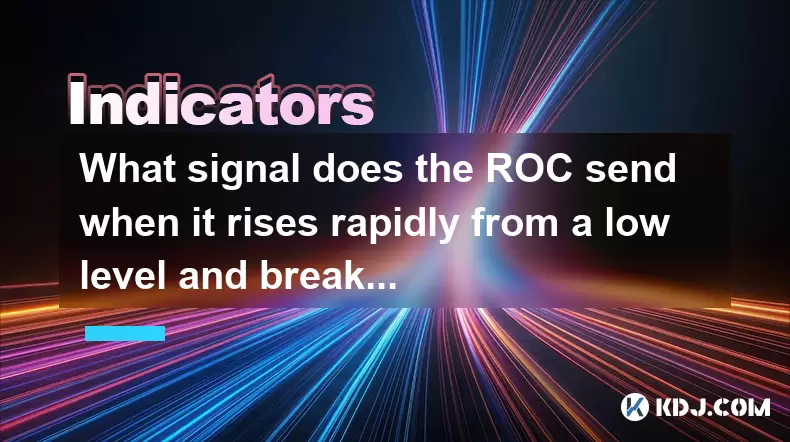
What signal does the ROC send when it rises rapidly from a low level and breaks through the zero axis?
Jul 27,2025 at 10:15am
Understanding the Rate of Change (ROC) IndicatorThe Rate of Change (ROC) is a momentum-based oscillator used in technical analysis to measure the perc...
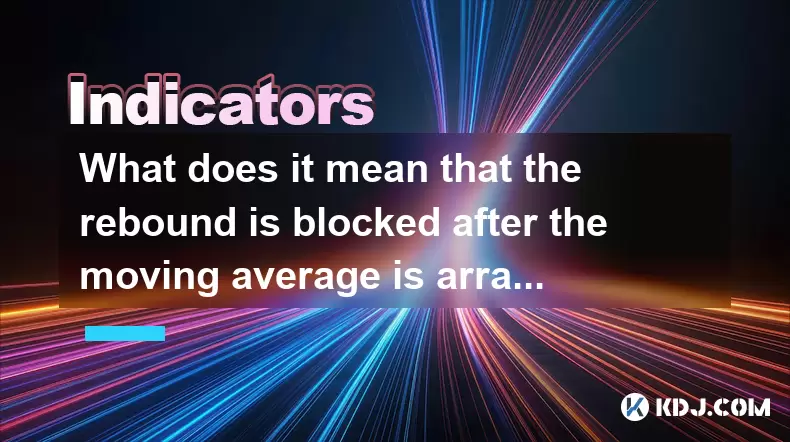
What does it mean that the rebound is blocked after the moving average is arranged in a short position for the first time?
Jul 26,2025 at 10:51am
Understanding the Short-Term Moving Average ConfigurationWhen traders refer to a 'short position arrangement' in moving averages, they are describing ...
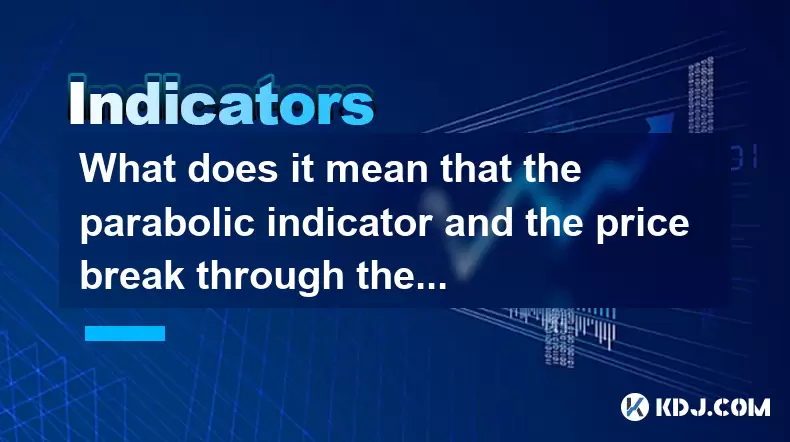
What does it mean that the parabolic indicator and the price break through the previous high at the same time?
Jul 26,2025 at 07:22pm
Understanding the Parabolic Indicator (SAR)The Parabolic SAR (Stop and Reverse) is a technical analysis tool developed by J. Welles Wilder to identify...
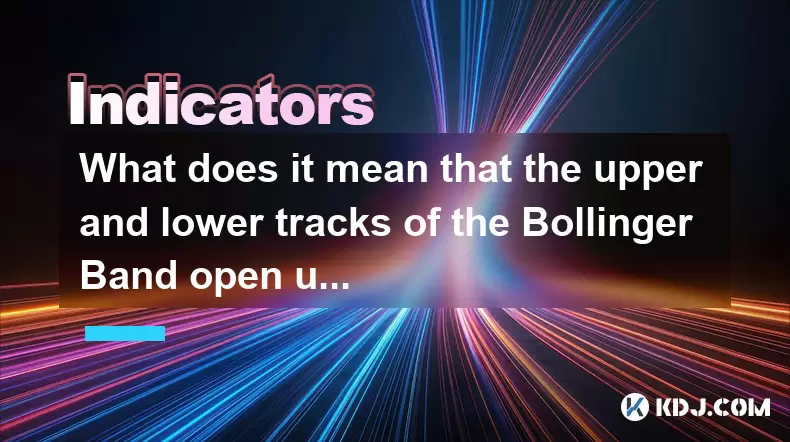
What does it mean that the upper and lower tracks of the Bollinger Band open upward at the same time?
Jul 27,2025 at 02:49pm
Understanding the Bollinger Band StructureThe Bollinger Band is a widely used technical analysis tool developed by John Bollinger. It consists of thre...
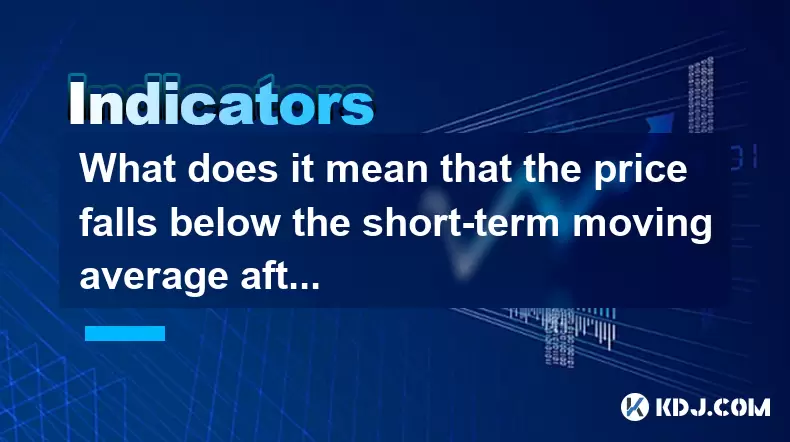
What does it mean that the price falls below the short-term moving average after the RSI top divergence?
Jul 26,2025 at 11:01pm
Understanding RSI Top Divergence in Cryptocurrency TradingThe Relative Strength Index (RSI) is a momentum oscillator widely used in cryptocurrency tra...
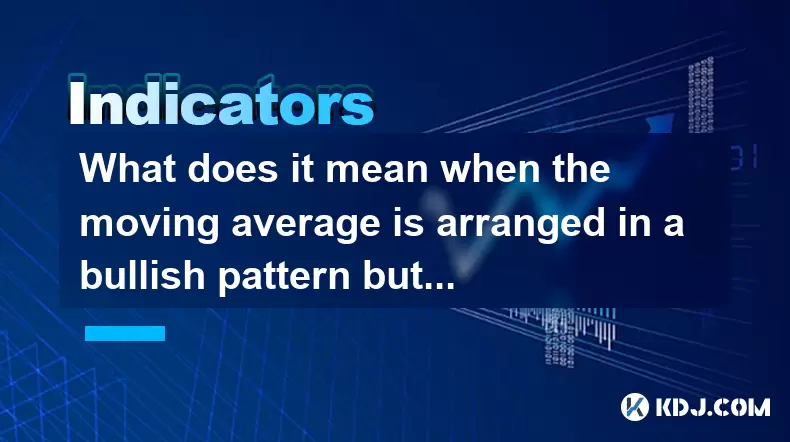
What does it mean when the moving average is arranged in a bullish pattern but the MACD bar is shortened?
Jul 27,2025 at 06:07am
Understanding the Bullish Moving Average PatternWhen traders observe a bullish moving average pattern, they typically refer to a configuration where s...

What signal does the ROC send when it rises rapidly from a low level and breaks through the zero axis?
Jul 27,2025 at 10:15am
Understanding the Rate of Change (ROC) IndicatorThe Rate of Change (ROC) is a momentum-based oscillator used in technical analysis to measure the perc...

What does it mean that the rebound is blocked after the moving average is arranged in a short position for the first time?
Jul 26,2025 at 10:51am
Understanding the Short-Term Moving Average ConfigurationWhen traders refer to a 'short position arrangement' in moving averages, they are describing ...

What does it mean that the parabolic indicator and the price break through the previous high at the same time?
Jul 26,2025 at 07:22pm
Understanding the Parabolic Indicator (SAR)The Parabolic SAR (Stop and Reverse) is a technical analysis tool developed by J. Welles Wilder to identify...

What does it mean that the upper and lower tracks of the Bollinger Band open upward at the same time?
Jul 27,2025 at 02:49pm
Understanding the Bollinger Band StructureThe Bollinger Band is a widely used technical analysis tool developed by John Bollinger. It consists of thre...

What does it mean that the price falls below the short-term moving average after the RSI top divergence?
Jul 26,2025 at 11:01pm
Understanding RSI Top Divergence in Cryptocurrency TradingThe Relative Strength Index (RSI) is a momentum oscillator widely used in cryptocurrency tra...

What does it mean when the moving average is arranged in a bullish pattern but the MACD bar is shortened?
Jul 27,2025 at 06:07am
Understanding the Bullish Moving Average PatternWhen traders observe a bullish moving average pattern, they typically refer to a configuration where s...
See all articles

























































































